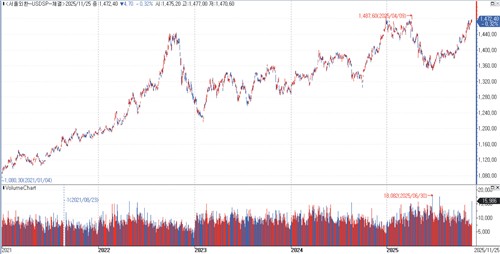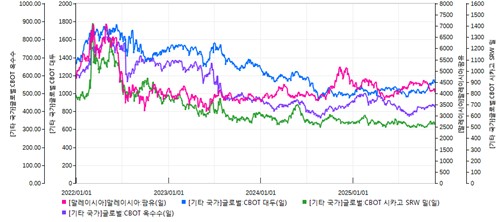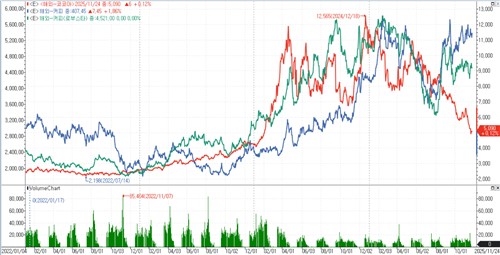(Seoul=Yonhap Infomax) Su In Jeong – As the dollar-won exchange rate hovers near the 1,500-won mark, the prolonged period of a strong dollar is intensifying cost pressures for South Korea’s food manufacturers, which rely heavily on imported raw materials.
However, companies with a significant share of exports and overseas sales are partially offsetting the impact of the strong dollar, as currency gains bolster their bottom lines.

According to Yonhap Infomax (screen number 2110), the dollar-won exchange rate closed at 1,472.40 won on the previous day, after reaching an intraday high of 1,477.00 won.
South Korea’s food manufacturing sector depends on imports for approximately 70% of its raw materials, making it highly vulnerable to currency fluctuations. A 2023 survey on raw material consumption in the food industry showed that only 31.9% of raw materials used by domestic food manufacturers were sourced locally.
This structure leaves the industry exposed to profit erosion when the won weakens.
For the third quarter, CJ CheilJedang Corp., a leading food company, disclosed that a 10% rise in the dollar-won rate would reduce its net profit by 1.3 billion won ($970,000). Lotte Wellfood Co. projected a 3.5 billion won ($2.6 million) decline in pre-tax profit under the same scenario.
Ottogi Co., another major player, stated in its latest business report that a 10% increase in the exchange rate could cut its current profit by 8.6 billion won ($6.4 million). An Ottogi official explained, “Our foreign currency liabilities from imported raw materials exceed our foreign currency assets from exports, so a stronger dollar results in valuation losses.”
A January survey by the Korea Chamber of Commerce and Industry of the nation’s top 50 companies found that 60% of respondents had based their 2024 business plans on an exchange rate in the 1,300-won range. Of the companies surveyed, 31 responded.
With the exchange rate now approaching 1,500 won, companies are bracing for unavoidable losses. Many are closely monitoring currency movements and adjusting their strategies accordingly.
“We are preparing next year’s business plan based on a rate in the high 1,300-won range,” said an industry official. “We expect the exchange rate to stabilize next year, but for now, we are watching the situation closely.”

Recently, some international commodity futures prices have shown signs of stabilization. According to Yonhap Infomax (screen number 8888), futures prices for key raw materials such as Malaysian palm oil, soybeans, wheat, and corn have been trending downward since peaking in 2022.

Coffee bean prices declined earlier this year but have rebounded amid supply concerns driven by abnormal weather. Cocoa prices, while showing a clear downward trend this year, remain elevated compared to pre-2023 levels, limiting relief for food companies.
Despite the downward trend in some raw material prices, factors such as a 6-12 month lag in import costs, varying contract structures by supplier, and the diversity of imported materials mean that companies are not yet feeling significant relief from cost pressures.
On the other hand, companies with a high proportion of exports and overseas sales are seeing the strong dollar offset some of the negative effects.
For example, Samyang Foods Co. disclosed in its annual report that a 10% rise in the dollar-won rate could boost its net profit by 5.7 billion won ($4.3 million). Orion Corp. projected a 7.7 billion won ($5.7 million) increase in current profit under the same scenario last year.
Nongshim Co. stated that a 5% rise in the exchange rate could lift its current profit by 850 million won ($630,000). A Nongshim official said, “We plan to further mitigate currency risk by expanding overseas sales over the medium to long term.”
CJ CheilJedang Corp. is also easing currency pressures through its overseas food sales. Excluding CJ Logistics, the company posted total sales of 4.5326 trillion won ($3.4 billion), with its food business accounting for 2.984 trillion won ($2.2 billion), or 66%. Of this, food sales in the Americas reached 1.2086 trillion won ($910 million).
sijung@yna.co.kr
(End)
Copyright (c) Yonhap Infomax. Unauthorized reproduction and redistribution, as well as AI training and utilization, are strictly prohibited.
Copyright © Yonhap Infomax Unauthorized reproduction and redistribution prohibited.

